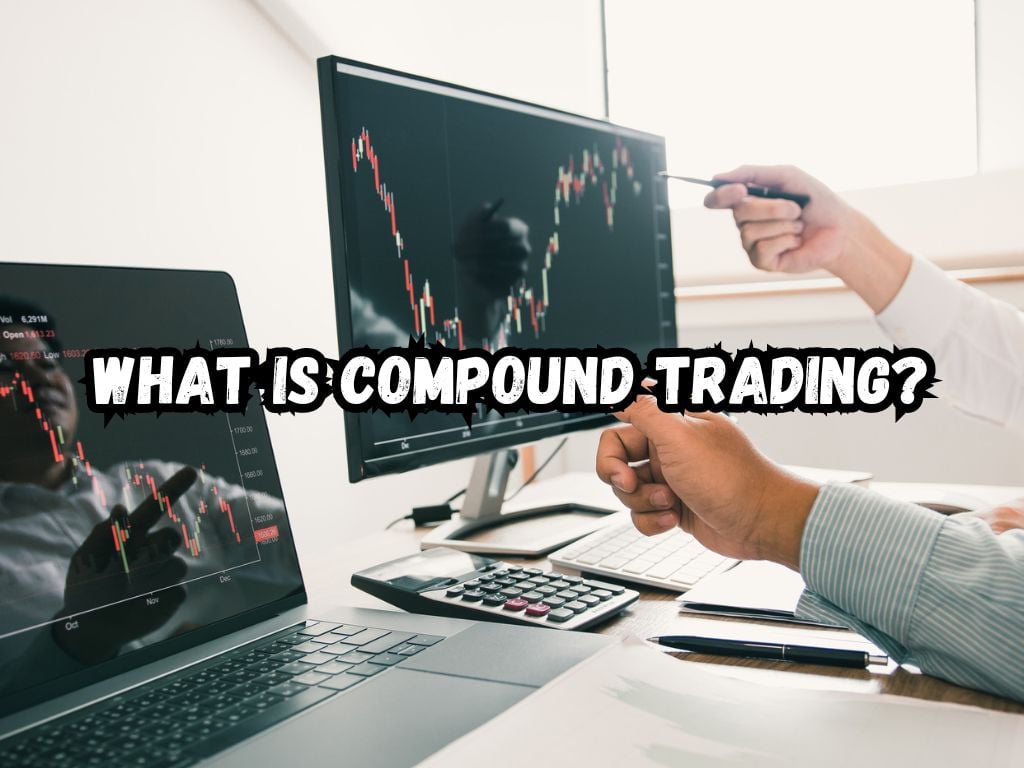In the world of investment and finance, numerous strategies promise the allure of significant returns. Among these, compound trading stands out for its potential to grow wealth exponentially over time.
This article aims to shed light on the concept of compound trading, elucidating its workings, benefits, risks, and strategic implementation for eager investors.
What is Compound Trading?
Compound trading is a strategy that focuses on reinvesting earnings to generate more profits over time. Unlike simple trading tactics that rely on flat gains, compound trading leverages the power of “interest on interest.”
This approach is not new but has gained popularity due to its historical success in building substantial wealth.
How Compound Trading Works?
The mechanics of compound trading are straightforward. When an investor earns a profit, rather than withdrawing this gain, they reinvest it. This process repeats, ideally leading to exponentially growing returns.
For example, investing $1,000 with a monthly return of 5% would not just yield a simple profit but, through reinvestment, escalate the earnings significantly over time.

The Power of Compounding in Trading
Mathematical Basis of Compounding
The exponential growth potential of compound trading lies in its mathematical foundation. The formula to calculate compound interest is a key tool here. This principle, when applied to trading, allows investors to forecast their potential earnings under certain conditions.
Importance of Time in Compounding
Time plays a crucial role in compound trading. The longer the investment period, the greater the returns, due to the snowball effect of compounding profits.
This characteristic emphasizes the need for patience and long-term planning in trading strategies.
Strategies for Compound Trading
Starting with Compound Trading
For those keen on adopting compound trading, starting correctly is essential. Initial considerations include deciding on the capital, understanding risk management, and setting clear goals.
Choosing the right assets is also crucial. Some markets are more suited to compound trading than others.
Key Compound Trading Strategies
Effective reinvestment strategies form the backbone of successful compound trading. The use of leverage and margins can amplify results but also introduce significant risks.
Diversification, on the other hand, can help mitigate these risks and ensure more stable returns.
Advanced Techniques
For the seasoned investor, automated compound trading systems and financial derivatives offer sophisticated tools to enhance the compounding effect.
These approaches require a deep understanding of the market and the mechanisms at play.
Pros and Cons of Compound Trading
Advantages
The most appealing advantage of compound trading is the potential for significant returns over an extended period. This strategy taps into the power of earning “interest on interest,” which can dramatically increase wealth.
Risks and Considerations
However, compound trading is not without its risks. Market volatility can severely affect compounded investments.
Over-leveraging is another danger, as it can lead to substantial losses. Regular monitoring and adjustments are vital to managing these risks.
Comparing Compound Trading with Other Investment Strategies
When compared with traditional investing or day trading, compound trading offers a unique blend of risk and reward.
While potentially more lucrative, it requires patience and a tolerance for risk not found in more conservative investment approaches.
Implementing Compound Trading Successfully
Preparing for Compound Trading
Education is the first step towards successful compound trading. Numerous resources are available for beginners to understand the basics.
Setting realistic expectations is also important, as significant results from compounding generally take time to materialize.
Creating a Compound Trading Plan
Developing a detailed compound trading plan is crucial. This plan should include goals, asset selection criteria, risk management strategies, and a schedule for review and adjustment.
Tracking performance against this plan helps in fine-tuning strategies for better results.
Best Practices in Compound Trading
Regular review and adjustments based on market conditions are essential practices in compound trading.
Effective risk management, such as setting stop-loss limits and diversifying investments, can also enhance the success of a compound trading strategy.

Real-world Examples and Case Studies
Stories of successful compound traders underscore the potential of this strategy. These examples serve as inspiration and provide valuable insights into the practical application of compound trading in various markets, from Forex to stocks.
Frequently Asked Questions
What is the minimum investment needed to start compound trading?
The minimum investment varies by market and broker but starting small and gradually increasing investment as confidence and skills grow is advisable.
How long should I practice compound trading before expecting significant results?
Compound trading is a long-term strategy. Significant results often take years, emphasizing the importance of patience.
Is compound trading suitable for beginners?
Yes, with proper education and risk management, beginners can start with compound trading.
How does compound trading fare during economic downturns?
Like any investment strategy, compound trading is susceptible to market fluctuations. However, a well-planned approach can mitigate risks.
Can compound trading be fully automated, and how reliable are these systems?
While automated systems exist, they require oversight. Reliability varies, so thorough research before implementation is essential.
What are the tax implications of compound trading?
Tax laws vary by country and can affect compound trading profits. Consulting a tax professional for advice is recommended.
Conclusion
Compound trading offers a compelling strategy for those seeking to grow their wealth over time.
While it comes with its set of challenges and risks, the potential rewards can be substantial for those who approach it with knowledge, patience, and discipline. Compound trading represents a dynamic and promising approach to investment.
By understanding and leveraging its principles, investors can potentially achieve substantial financial growth over time.


 Tags:
Tags:










